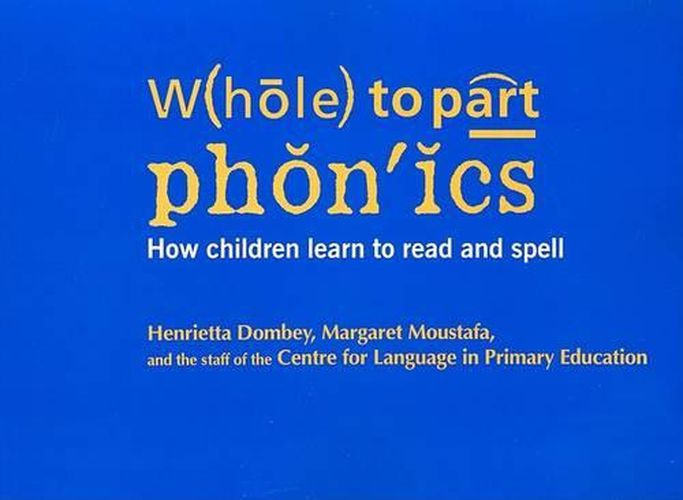Readings Newsletter
Become a Readings Member to make your shopping experience even easier.
Sign in or sign up for free!
You’re not far away from qualifying for FREE standard shipping within Australia
You’ve qualified for FREE standard shipping within Australia
The cart is loading…






Significant recent research in literacy learning casts serious doubt on the effectiveness of traditional phonics instruction. Researchers have discovered that traditional phonics, with its emphasis on letters, sounds, and words, ignores the complexity of childrens natural learning processes, including childrens inclination to focus first on the text, then on whole words, and then on their constituent parts. Whole to Part Phonics offers a concise, accessible introduction to this research and proven strategies for translating it into effective classroom practice.
The contributors to Whole to Part Phonics recognize that children need to understand letter-sound relationships in order to become independent and fluent readers. But, they argue, this knowledge is of little value unless children learn how to use it in context. Accordingly, the authors maintain that childrens encounters with print lay the groundwork for effective phonics learning. By drawing on childrens wider experience of reading and on their preferred modes of learning, whole-to-part phonics offers an exciting alternativestudents focus on the construction of meaning rather than the decoding of text.
In Part I, Henrietta Dombey explains how phonics works in English and surveys the research evidence for whole-to-part phonics. Margaret Moustafa then offers advice on using whole-to-part phonics strategies in a rich, literature-based reading program. Olivia OSullivan of the Centre for Language in Primary Education (CLPE) surveys research that investigates the connection between developmental spelling and reading. In Part II, the staff of the CLPE offers a set of detailed, practical suggestions for promoting the knowledge children need to learn letter-sound relationships and use them effectively in both their reading and writing.
$9.00 standard shipping within Australia
FREE standard shipping within Australia for orders over $100.00
Express & International shipping calculated at checkout
Significant recent research in literacy learning casts serious doubt on the effectiveness of traditional phonics instruction. Researchers have discovered that traditional phonics, with its emphasis on letters, sounds, and words, ignores the complexity of childrens natural learning processes, including childrens inclination to focus first on the text, then on whole words, and then on their constituent parts. Whole to Part Phonics offers a concise, accessible introduction to this research and proven strategies for translating it into effective classroom practice.
The contributors to Whole to Part Phonics recognize that children need to understand letter-sound relationships in order to become independent and fluent readers. But, they argue, this knowledge is of little value unless children learn how to use it in context. Accordingly, the authors maintain that childrens encounters with print lay the groundwork for effective phonics learning. By drawing on childrens wider experience of reading and on their preferred modes of learning, whole-to-part phonics offers an exciting alternativestudents focus on the construction of meaning rather than the decoding of text.
In Part I, Henrietta Dombey explains how phonics works in English and surveys the research evidence for whole-to-part phonics. Margaret Moustafa then offers advice on using whole-to-part phonics strategies in a rich, literature-based reading program. Olivia OSullivan of the Centre for Language in Primary Education (CLPE) surveys research that investigates the connection between developmental spelling and reading. In Part II, the staff of the CLPE offers a set of detailed, practical suggestions for promoting the knowledge children need to learn letter-sound relationships and use them effectively in both their reading and writing.